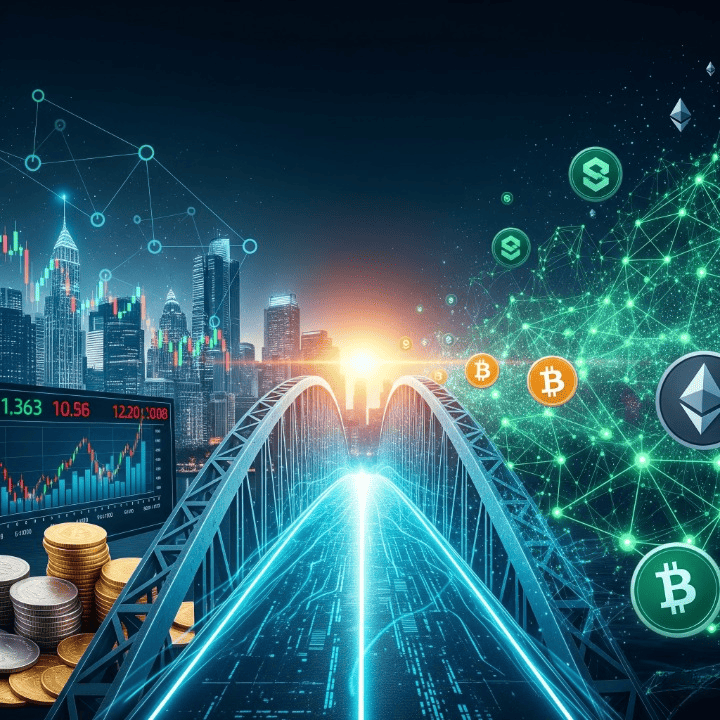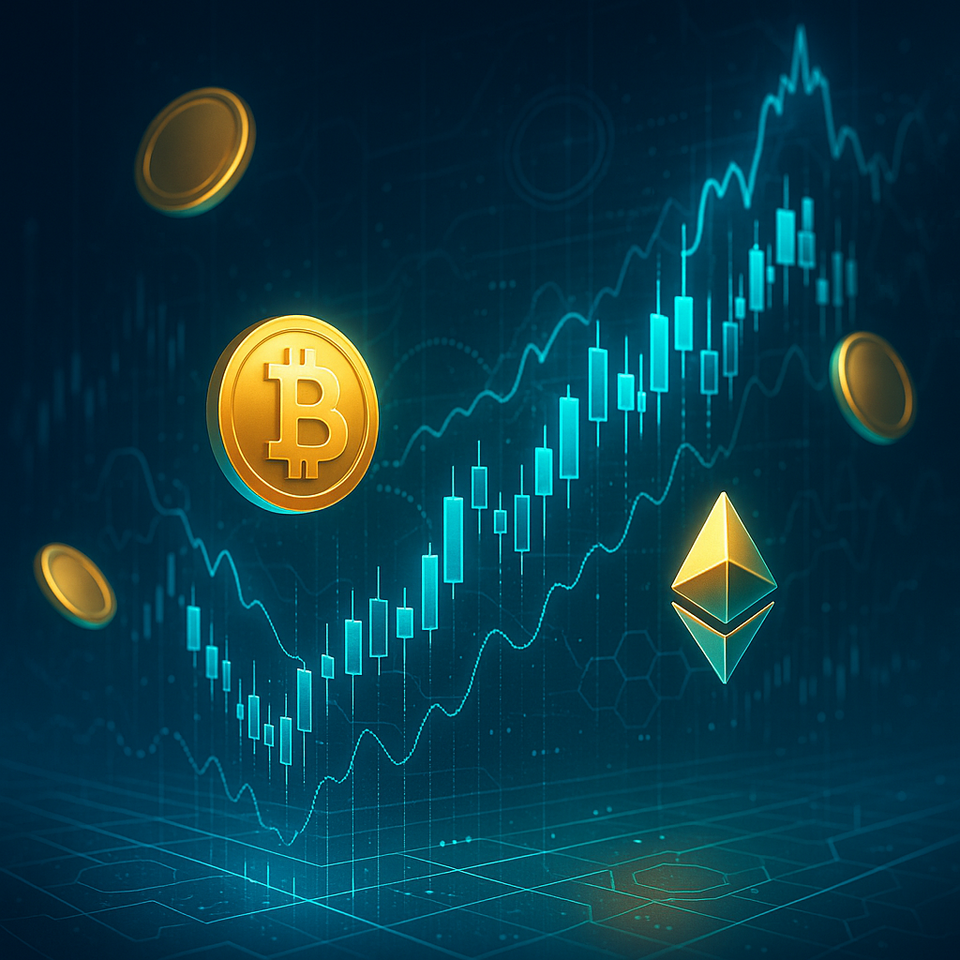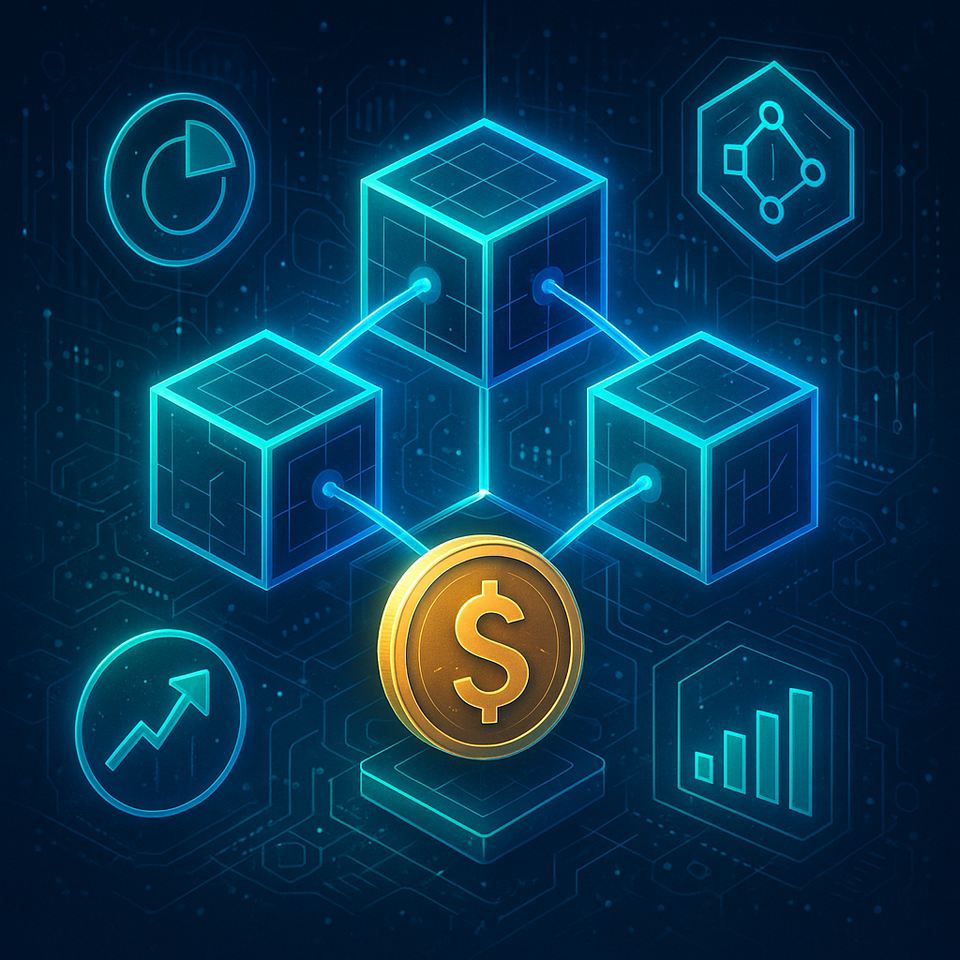
Introduction
Many investors often feel caught between two distinct financial paradigms. On one side lies the stability of traditional investments. On the other, the dynamic yet sometimes volatile world of digital assets. This divide presents a common challenge for those seeking innovation. It also affects those looking for new avenues of growth. However, a powerful new force is emerging. It promises to unite these seemingly disparate realms. This force is Real-World Asset (RWA) tokenization.
RWA tokenization is more than just a buzzword. It represents a fundamental shift. It is reshaping how we perceive value and ownership. This concept transforms tangible and intangible assets. It converts them into digital tokens on a blockchain. This process introduces unprecedented liquidity and accessibility. It also brings transparency to markets. Understanding RWA tokenization is crucial. It helps investors navigate the evolving financial landscape. It offers exciting new possibilities for wealth creation. This article will explore its transformative impact. We will examine its potential to redefine investment.
Understanding Real-World Asset (RWA) Tokenization
The financial world constantly seeks innovation. This drive aims to enhance efficiency and accessibility. RWA tokenization stands as a prime example of this pursuit. It merges the physical world’s value with the digital realm’s capabilities. This fusion creates entirely new investment horizons.
What is RWA Tokenization?
RWA tokenization involves representing the ownership of a physical asset. This representation occurs via a digital token. The token exists on a blockchain network. Essentially, it creates a digital twin. This twin mirrors a real-world object or right. Assets can be diverse. They range from real estate to fine art. They also include commodities and intellectual property. Each token serves as a verifiable record. It confirms ownership of a specific share. This share relates to the underlying asset. Blockchain technology underpins this entire process. It provides an immutable and secure ledger.
How Does it Work?
The process of tokenizing an RWA typically follows several steps. First, an asset is identified. Its value is then appraised by experts. Legal due diligence is performed. This confirms ownership and rights. Next, the asset is securitized. This means converting its value into shares or units. These units are then represented as digital tokens. Smart contracts play a vital role here. They automate the rules governing the tokens. This includes transfer, ownership, and dividends. Each token is unique. It represents a fractional share of the asset. This enables fractional ownership. It also makes large assets divisible. Finally, these tokens are issued on a blockchain. They can then be traded on compliant platforms.
Why is it Important?
RWA tokenization addresses long-standing inefficiencies. It tackles challenges within traditional finance. Many valuable assets are illiquid. They are difficult and slow to trade. Tokenization changes this dynamic entirely. It streamlines ownership transfer. It reduces intermediaries. This leads to lower costs. It also speeds up transactions. Furthermore, it democratizes access to exclusive investments. It opens doors for a wider range of investors. This innovative approach is fundamentally redefining markets.
The Benefits for Investors and Markets
RWA tokenization offers a compelling suite of advantages. These benefits extend to both individual investors and the broader market. They address limitations commonly found in traditional asset classes. This technology paves the way for a more inclusive future. It promotes efficient and transparent financial systems.
Increased Liquidity
One of the most significant benefits is enhanced liquidity. Many valuable real-world assets are inherently illiquid. Think of a large commercial building. Selling it can take months or even years. Tokenizing such an asset changes its nature. It divides it into many small, tradable units. These units are digital tokens. This makes them much easier to buy and sell. Investors can divest portions of their holdings. They do not need to sell the entire asset. This expands the pool of potential buyers. It also reduces transaction times significantly. This newfound liquidity unlocks considerable value. It benefits both buyers and sellers alike.
Fractional Ownership
Fractional ownership is another revolutionary aspect. High-value assets are often out of reach for average investors. Examples include luxury real estate or expensive artwork. Tokenization allows these assets to be broken down. They are divided into smaller, affordable units. An investor can buy a tiny fraction. They can own a piece of a high-rise building. They could also own a share of a famous painting. This significantly lowers the entry barrier. It enables more people to participate. It also facilitates greater portfolio diversification. Investors can spread their capital across various asset types. They gain exposure to previously inaccessible markets. This strategy can help mitigate risk.
Enhanced Transparency and Efficiency
The underlying blockchain technology provides unparalleled transparency. All transactions are recorded on a public ledger. This ledger is immutable and verifiable. This means records cannot be altered. It offers a single source of truth for ownership. This greatly reduces fraud risks. It also builds trust among participants. Furthermore, smart contracts automate many processes. These include dividend payouts or ownership transfers. This automation removes the need for numerous intermediaries. It simplifies complex legal procedures. The result is a highly efficient system. It lowers administrative costs and accelerates settlement times. Transactions can settle in minutes, not days.
Global Accessibility
Traditional asset markets often have geographical barriers. Investing in foreign real estate can be complex. It involves intricate legal and financial hurdles. RWA tokenization breaks down these borders. Digital tokens can be bought and sold anywhere in the world. This is possible as long as an internet connection exists. This global accessibility is transformative. It allows investors from different countries to participate. They can invest in assets across the globe. This opens up vast new capital pools. It also creates a truly global marketplace for assets. It enhances market depth and vibrancy.
Types of Real-World Assets Being Tokenized
The scope of assets suitable for RWA tokenization is vast and growing. This technology has the potential to digitize almost any asset. It can bring liquidity and efficiency to previously untapped markets. The categories of assets being tokenized are broad. They encompass both physical and intangible forms of value. This demonstrates the versatility of blockchain. It shows its capability to revolutionize diverse sectors.
Tangible Assets
These are physical assets that have inherent value. They are perhaps the most intuitive examples for tokenization.
- Real Estate: This is a prime candidate for tokenization. It includes commercial properties, residential homes, and land. Tokenizing real estate allows for fractional ownership. It increases liquidity in a traditionally illiquid market. Investors can own a small share of a building. This share can then be traded easily.
- Art and Collectibles: High-value artworks, rare wines, and luxury watches are often tokenized. These assets are expensive and exclusive. Tokenization makes them accessible to more investors. It allows for partial ownership. This diversifies collections. It also reduces the barrier to entry for art enthusiasts.
- Precious Metals and Commodities: Gold, silver, and other commodities can be tokenized. These tokens represent actual holdings of the physical metal. This offers a digital way to invest in physical commodities. It avoids the complexities of physical storage.
Intangible Assets
Beyond physical goods, intangible assets also hold significant value. These can also benefit greatly from tokenization.
- Intellectual Property (IP): Patents, copyrights, and trademarks are valuable. Tokenization can create new ways to monetize IP. Owners can sell fractional rights to their intellectual property. Investors can receive royalties from its usage.
- Royalties: Future royalty streams from music, film, or publishing can be tokenized. This allows creators to raise capital. They can sell a portion of their future earnings. Investors gain access to passive income streams.
- Carbon Credits: These are permits that allow a certain amount of carbon emissions. Tokenizing carbon credits makes them more tradable. It increases transparency in environmental markets. This supports sustainability initiatives.
Financial Instruments
Even traditional financial instruments are being reimagined through tokenization. This brings the benefits of blockchain to established markets.
- Bonds and Equities: Traditional stocks and bonds can be tokenized. This offers faster settlement. It provides greater transparency. It also reduces issuance costs. This digital representation can streamline capital markets.
- Private Equity and Venture Capital: These markets are typically illiquid. They are also exclusive. Tokenization can open them up to a broader investor base. It allows for fractional investment in private companies. This increases accessibility to high-growth opportunities.
Navigating the Challenges and Risks
While RWA tokenization presents exciting opportunities, it is not without its hurdles. The journey to widespread adoption requires careful navigation. Several challenges and risks must be addressed. These ensure the stability and integrity of this nascent market. Understanding these potential pitfalls is crucial for investors. It is also important for developers and regulators. This knowledge helps build a robust and secure ecosystem for tokenized assets.
Regulatory Landscape
The regulatory environment for digital assets is still evolving. This is a significant challenge for RWA tokenization. Different jurisdictions have varying laws. They treat tokenized assets in diverse ways. Some may classify them as securities. Others might view them as commodities. This lack of a unified global framework creates uncertainty. It can hinder institutional adoption. Clear and consistent regulations are vital. They provide legal certainty for issuers and investors. They also help protect consumers. Working with regulators is essential. This ensures the responsible growth of the market.
Technical Complexities
The underlying blockchain technology is complex. It requires robust development and infrastructure. Ensuring the security of smart contracts is paramount. Bugs or vulnerabilities can lead to significant losses. Auditing smart contracts is critical. This minimizes potential exploits. Furthermore, interoperability between different blockchains is a concern. Assets tokenized on one chain might not be easily tradable elsewhere. Solving these technical challenges is key. It will enable seamless integration and broader use cases. Scalability of blockchain networks also needs continuous improvement.
Valuation and Custody
Accurately valuing the underlying real-world assets is crucial. The digital token’s value is directly tied to its physical counterpart. Independent appraisals are necessary. They ensure fair and transparent pricing. Any discrepancy can erode investor confidence. Another challenge is the custody of physical assets. Securing the physical asset linked to a token is vital. This requires reliable third-party custodians. These custodians must have robust security measures. They also need strong insurance policies. Maintaining the integrity of the link between the digital token and the physical asset is essential.
Market Adoption and Education
Despite its potential, RWA tokenization is still in its early stages. Gaining widespread market adoption takes time. It requires significant education efforts. Many traditional investors are unfamiliar with blockchain. They might be wary of digital assets. Bridging this knowledge gap is important. It helps foster trust and understanding. Institutional investors need clear frameworks. They need established track records. These assure them of safety and compliance. Collaborative efforts between industry players and educators are needed. They will drive broader acceptance and growth.
The Future of Finance: Bridging Crypto and Traditional Finance
RWA tokenization is poised to be a pivotal force. It is shaping the future trajectory of global finance. Its ability to connect two distinct financial worlds is transformative. It promises a more integrated, efficient, and accessible financial ecosystem. This convergence will redefine how we invest. It will also change how we manage and grow wealth. The implications for individuals, institutions, and markets are profound and far-reaching.
Convergence of Ecosystems
The most compelling promise of RWA tokenization is its role as a bridge. It facilitates a seamless flow of value. This occurs between the crypto world and traditional finance. It allows real-world assets to gain crypto’s benefits. These benefits include liquidity, transparency, and global reach. Conversely, crypto gains stability. It gets tangible backing from real-world value. This convergence leads to hybrid financial products. It creates new platforms. These blend the best of both worlds. The line between traditional and digital investments will continue to blur. This creates a more unified financial landscape. Digital assets will become increasingly mainstream.
New Investment Strategies
For investors, RWA tokenization unlocks unprecedented avenues. It enables truly innovative investment strategies. Investors can achieve enhanced portfolio diversification. They can easily access fractional ownership of diverse assets. This includes luxury real estate, fine art, or private equity. These were once exclusive domains. Blending traditional assets with tokenized versions allows for optimized risk-return profiles. For example, an investor could hold a tokenized bond. They could also own a fraction of a commercial building. This diversification reduces reliance on single asset classes. It potentially smooths out market volatility. It creates more resilient portfolios.
Impact on Financial Planning
The implications for financial planning are significant. RWA tokenization offers new tools for long-term wealth building. Financial advisors can incorporate tokenized assets into client portfolios. This provides exposure to alternative investments. It enhances growth potential. It also helps meet specific financial goals. For example, individuals planning for retirement can consider tokenized real estate. This could offer stable, passive income streams. It offers diversification beyond stocks and bonds. Understanding these new asset classes is essential. It helps individuals make informed decisions. It builds a robust future financial plan.
Institutional Adoption
Institutional interest in RWA tokenization is rapidly growing. Major banks, asset managers, and financial institutions are exploring this space. They recognize the potential for efficiency gains. They also see new revenue streams. The development of institutional-grade platforms is ongoing. These platforms cater to the needs of large-scale investors. This includes compliance, security, and scalability. As regulatory clarity improves, institutional adoption will accelerate. This will bring massive capital and credibility to the RWA tokenization market. It will further cement its place in global finance.
Conclusion
The advent of Real-World Asset (RWA) tokenization marks a pivotal moment. It is redefining the intersection of cryptocurrency and traditional finance. This innovation is not merely a technological advancement. It represents a fundamental reshaping of economic paradigms. By digitizing physical and intangible assets, it unlocks immense value. It enhances liquidity, fosters fractional ownership, and improves transparency. These benefits empower investors globally. They facilitate more efficient and accessible markets.
While challenges remain, particularly around regulation and technical integration, the trajectory is clear. RWA tokenization is a powerful catalyst for change. It is accelerating the convergence of two distinct financial worlds. It offers new investment strategies and tools for financial planning. It is paving the way for a more inclusive and dynamic global economy. For those seeking to deepen their understanding of financial markets, exploring RWA tokenization is paramount. It is an innovative frontier. It holds immense promise for the future of investment and wealth management.


